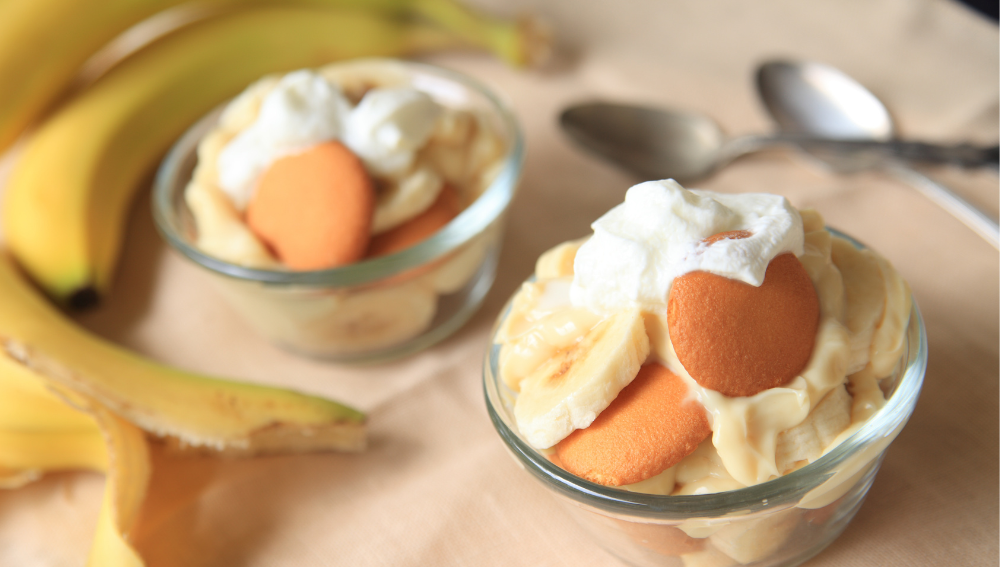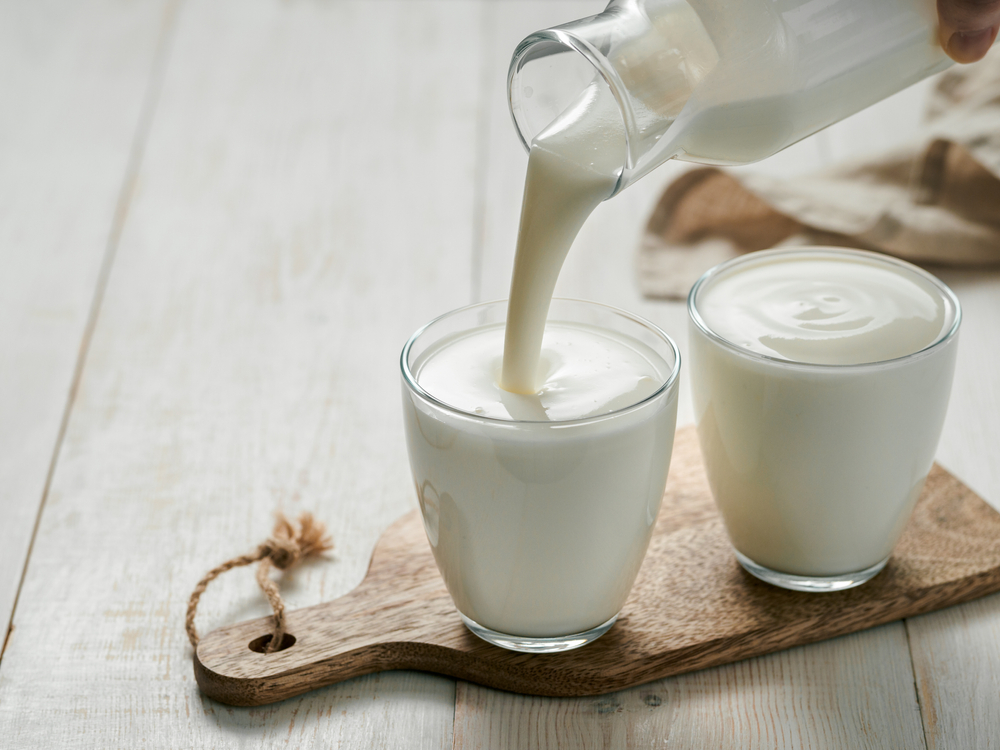Crème Brûlée, which translates directly into “burned cream” doesn’t sound so appetizing in English. However, it’s a delicious dessert with a rich, old history.
Creme brulee is four centuries old and was created in France.
What is Crème Brûlée?
Crème brûlée is a baked dessert made from heavy cream, eggs, sugar, and vanilla. It has a pudding or custard like consistency. It’s topped with a crunchy layer of melted sugar that should crack when tapped with a spoon.
Crème brûlée should be served cold, but the melted sugar on top should be warm or room temperature.
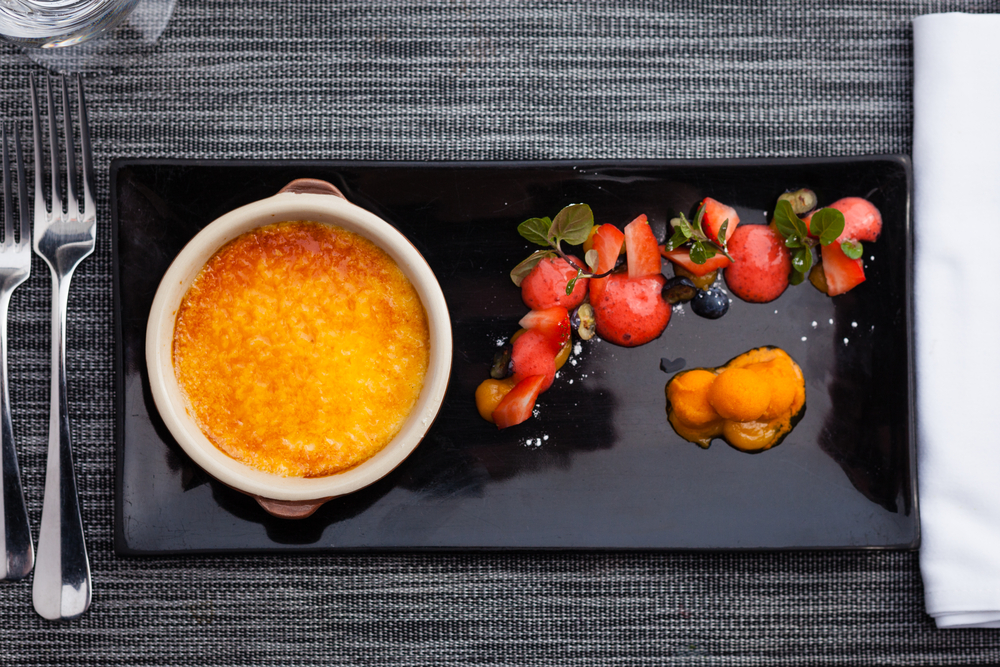
Crème Brûlée is usually served in a ramekin or small baking bowl. It’s often served with berries or caramel on the bottom, underneath the custard.
It has a stark contrast between creaminess from the pudding and crunchiness from the sugar. You can usually get both in one bite!
The top of crème brûlée, the melted sugar, is actually achieved with a torch. Sugar granules are added to the dessert, then caramelized with the flame.
Reheated crème brûlée is not recommended, since it’s served cold.
Where did Crème Brûlée originate?
The first appearance of a recipe for crème brûlée came in 1691, out of a cookbook belonging to a chef to French royals. Francois Massialot transcribed the early crème brûlée recipe in a cookbook called Cuisinier royal et bourgeois, meaning “Royal and Bourgeois Cuisine.”
It makes sense that this dish was originally created for royals, because it’s continuously served in traditional French fine-dining establishments today. Very fancy!
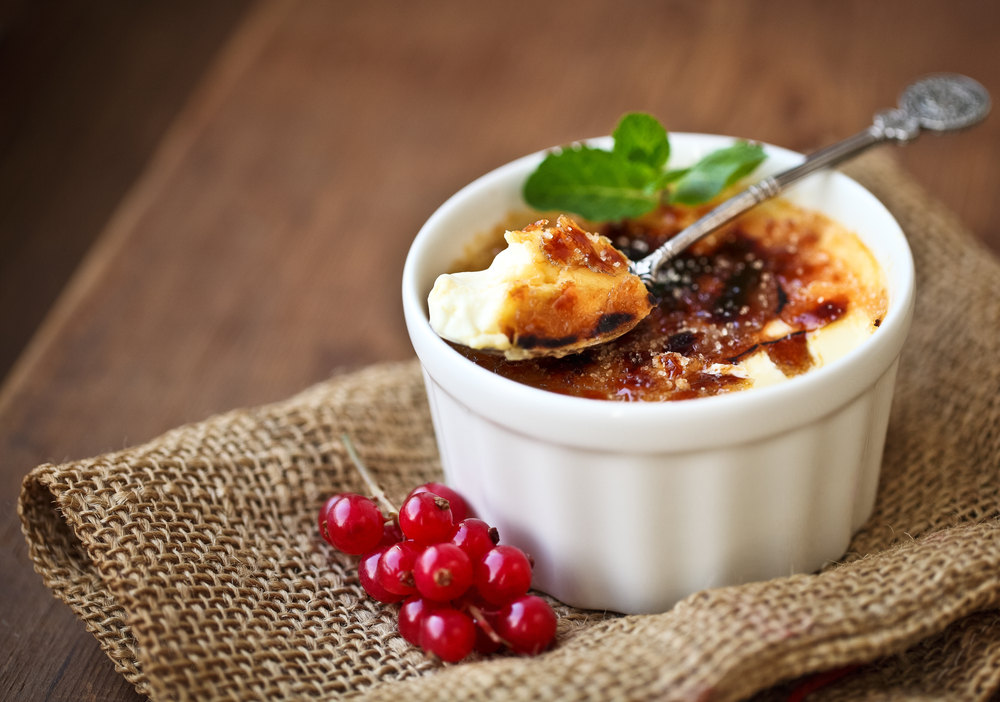
According to some gastronomists, Massialot’s recipe was probably not the first instance of crème brûlée, though.
Another dish of Spanish origin called crema catalana dates back to the 14th century, and is thought to have inspired creme brulee due to their similarities. The only difference is that crème brûlée is make with cream, while crema catalana is made with milk.
Many say they’re virtually similar, but are they really?
The knowledge that stirred milk eventually creates cream was around back then, so using milk instead could’ve been an intentional part of the Spanish dish.
Either way, crème brûlée is colloquially known as such now, and it would throw a wrench in a lot of French restaurants to have to change the dish to a Spanish name.
Trinity College in Cambridge
There’s also a story that crème brûlée was invented at Trinity College in Cambridge, England. In this narrative, the dessert is referred to as “Trinity Burnt Cream.” Crème brûlée shows up in a lot of recipe and cookbooks under this name.
The kitchens at the college still serve a version of the dish, with the school’s crest burnt into the sugar.
The story goes that chefs at Trinity College came up with the recipe around 1630. If this were true, it would mean that Massialot was 60 years behind when he wrote the recipe for French royals.
The recipe is the same as Massialot’s version, which is today known as the true crème brûlée.
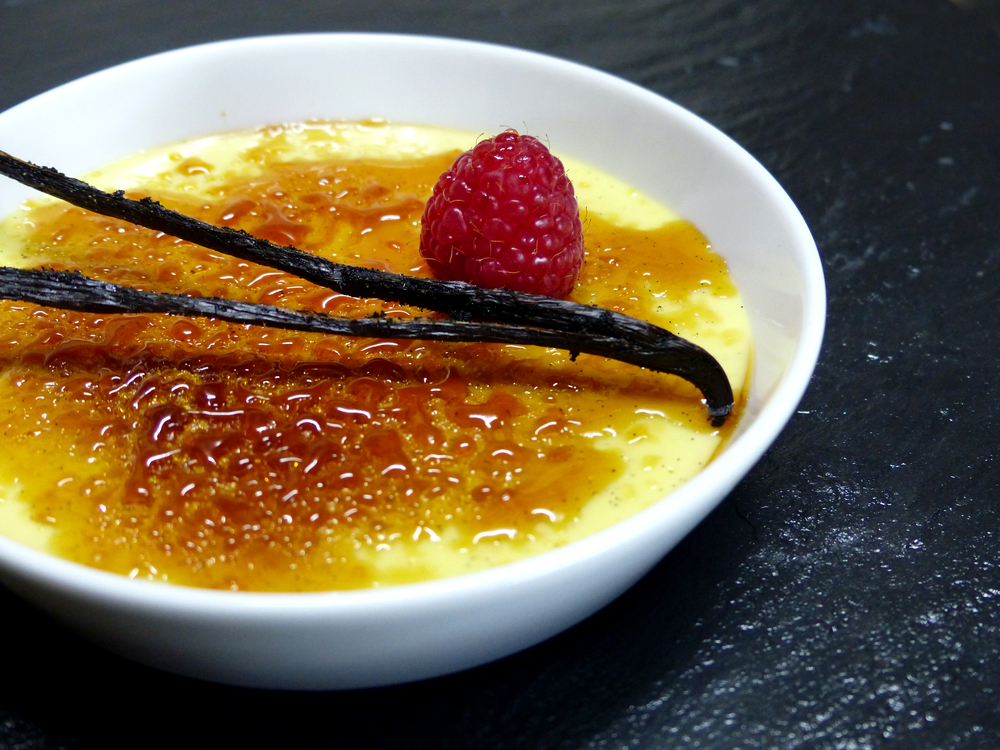
Trinity College at Cambrudge doesn’t acknowledge themselves as the originator of crème brûlée, even saying on their webpage that the story of crème brûlée’s invention there has “no basis in fact.”
As such, France still stands as the birthplace of the original crème brûlée.
Crème Brûlée in England
After writing the Cuisinier royal et bourgeois, Massialot wrote another recipe called crême à l’Angloise, which translates into “English cream.” This has also raised suspicions and doubt regarding crème brûlée’s origins.
This recipe was the exact same as the earlier French recipe, and came after, so there’s no doubt that it isn’t the origin.
Crème Brûlée in Spain
Crema catalana is essentially the same dessert as crème brûlée, the only difference being that it’s made with milk instead of heavy cream. It’s also usually served with cinnamon.
These small differences, though, does technically make it a different dessert. Thus, to argue that crema catalana is the original crème brûlée would be incorrect and reductionist of the two different recipes.
Le Cirque
Crème brûlée wasn’t very popular at all during the 19th and 20th centuries in France, England, or anywhere else.
However, during the boom of fine-dining and trendy restaurants during the economic-thriving period of the 1980s, crème brûlée became popular again.
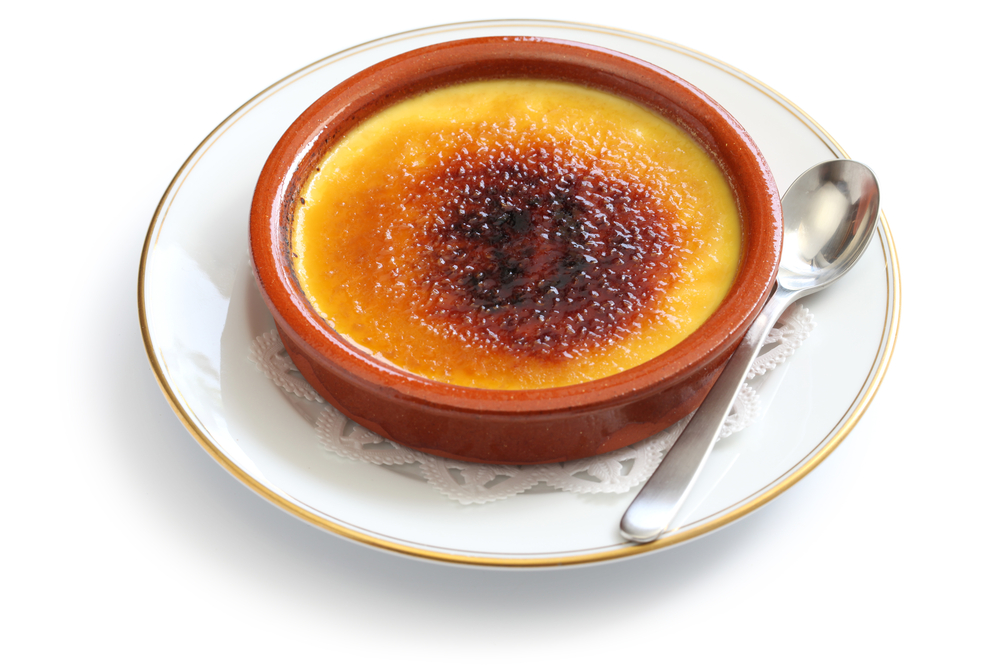
It’s possible that it was mainly popularized by Chef Sirio Maccioni at his restaurant in New York City, Le Cirque. Maccioni claimed to have made the dessert famous, meaning he’s the reason it’s still served in many restaurants today.
What Crème Brûlée is Today
Crème brûlée has become wildly popular in the United States, and is available at most fine-dining restaurants, whether they serve traditional French fare or not.
There have been ice cream and cake flavors dedicated to crème brûlée, as well as donuts, coffee creamer, cupcakes, and more.
Crème brûlée was served at the White House by Thomas Jefferson during his presidency, and continues to signify luxury, wealth, and refinement. It’s a shockingly simple flavor for the amount of regard it holds.
The “best crème brûlées in the world” seem to all be in France, where the recipe must stay pure. French cooking is very secretive!
It’s one of the first dishes chefs often learn to make in culinary school, especially when learning the bases of French food.
According to Chef Raphael Francois of Le DeSales restaurant, the best crème brûlée recipe is the original one used at Le Cirque. Le Cirque is still open, though the NYC location is currently relocating. There’s also locations in Las Vegas and Dubai.

Frequently Asked Questions
When was the first crème brûlée made?
What was likely the first crème brûlée was made in 1691 by Francois Massialot, a chef to the French royals of the time. These royals included King Louis XIV and Anne of Austria.
It’s said, but not proven, that chefs at the Trinity College Cambridge dining hall made crème brûlée in 1630.
What region of France is crème brûlée from?
Crème brûlée was likely invented at the Palace of Versailles in Northern France, as it was created in a cookbook for the royals. Even if Massialot didn’t actually write the recipe in Versailles, its first many uses took place there.
Who invented crème brûlée?
Chef Francois Massialot invented crème brûlée for Louis XIV and the rest of the royal family.
What does crème brûlée literally mean?
Crème brûlée literally translates to “burnt cream,” referring to the torched sugar on top of the custard. This sugar takes on a brownish-gold appearance that can make it appear burnt.
Is crème brûlée French or Spanish?

Crème brûlée is French. A very similar dish called crema catalana is Spanish. Crema catalana is made with milk, rather than cream.
What is crème brûlée called in England?
In England, crème brûlée is called “Trinity Burnt Cream,” which refers to the story of the dish being invented in the Trinity College kitchens.
What does brûlée mean in English?
Crème brûlée translates to “burnt cream” in English.
What is it called when you torch the sugar on crème brûlée?
The technical cooking term for this is called caramelizing. It’s a bit confusing, because caramelized onions aren’t made with a torch. However, when you’re caramelizing sugar, you use a flame. It could also be referred to as melting sugar.


